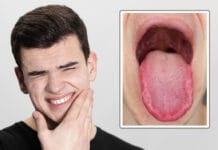Scientists at Hofstra University in Hempstead, New York recently examined the facilitators and potential barriers to implementing Oral Rapid HIV testing in the dental setting. The test is very helpful for patients who are unaware of their positive HIV status. The study, “Oral Rapid HIV Testing: Implementation experiences of dental hygiene faculty and students,” was published in the Journal of Dental Hygiene.
Information about HIV
Over 1 million people in the United States have HIV, and an estimated 14% are unaware they are infected with the virus. Around 38,739 people were diagnosed in 2017 alone.
According to the Centers for Disease Control and Prevention, HIV stands for human immunodeficiency virus. Patients with HIV have a weakened immune system because the virus destroys CD4 cells (or T cells) which are responsible for protecting the body from harmful bacteria. This ultimately leads to HIV patients more vulnerable to catching different diseases and getting sick.
Some of the symptoms associated with HIV and AIDs are flu-like symptoms like fever, nausea, and loss of appetite. Patients should also pay attention when they feel pain in their abdomen or when they try to swallow. A dry cough, skin rash, sore throat, and difficulty swallowing are HIV symptoms. Fatigue, excessive sweating, mouth ulcers, a sore groin, and weight loss are also common symptoms linked to HIV and AIDs.
The virus can eventually lead to acquired immunodeficiency syndrome, or AIDs when left untreated. While there is no effective cure for HIV, there is antiretroviral treatment available that can make life more bearable. A healthy lifestyle and other good habits can also help extend a patient’s life.
About the Study
The lead clinical researcher of the study is Anthony J. Santella, DrPH, MCHES, an associate professor of public health at Hofstra University. He also worked with Alana Doonachar, MS, PA-C who is a master of public health candidate at the same university. Dr. Santeria and Doonacher were joined by Anna Matthews, RDH, MS an associate professor of dental hygiene at the New York City College of Technology in Brooklyn, New York. An associate professor of dental hygiene named Cristina Casa-Levine, RDH, EdD, and assistant professor Lawrence Pizzitola, DDS from Farmingdale State College at Farmingdale, New York also contributed to the study, as well as Gregory O. Page, MD, an adjunct associate professor of dental hygiene at Hostos Community College located in Bronx, New York.
To start the investigation, the researchers decided to closely examine the experiences of dental hygiene faculty and students who implemented Oral Rapid HIV testing in university-based dental hygiene clinics. Dr. Santella and his team wanted to assess how the facilitators administered the tests and identify any potential problems or barriers.
The scientists interviewed both dental hygiene faculty and students who helped administer Oral Rapid HIV testing in three local dental clinics. Eight of the study participants were faculty, and 14 of them were students. Each interview was recorded and transcribed.
The results of the study showed that the dental hygienists were confident they were skilled enough to offer patients Oral Rapid HIV testing without any judgment. They also received professional training on how to administer the test beforehand. Participants also thought that dental hygienists were highly qualified to discuss the results with their patients in a discrete manner. Meanwhile, the researchers learned that the majority of patients were receptive to taking the Oral Rapid HIV testing because it was free, quick, and convenient.
In Conclusion
Based on their findings, dental hygienists can play a pivotal role in helping patients find out if they have HIV. Dental hygienists who are qualified to administer the test should explain how the test works and its benefits to patients who are unsure of their HIV status.











